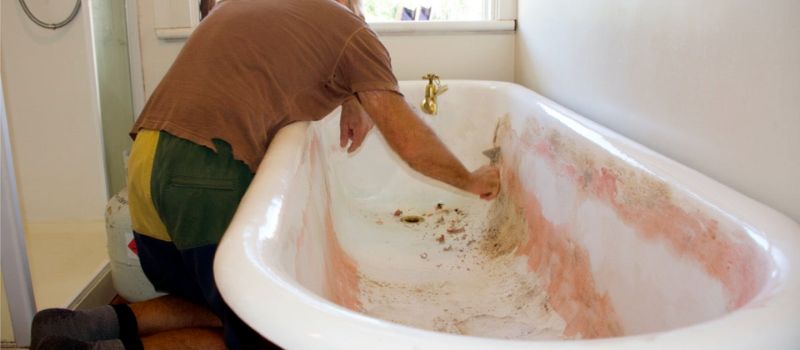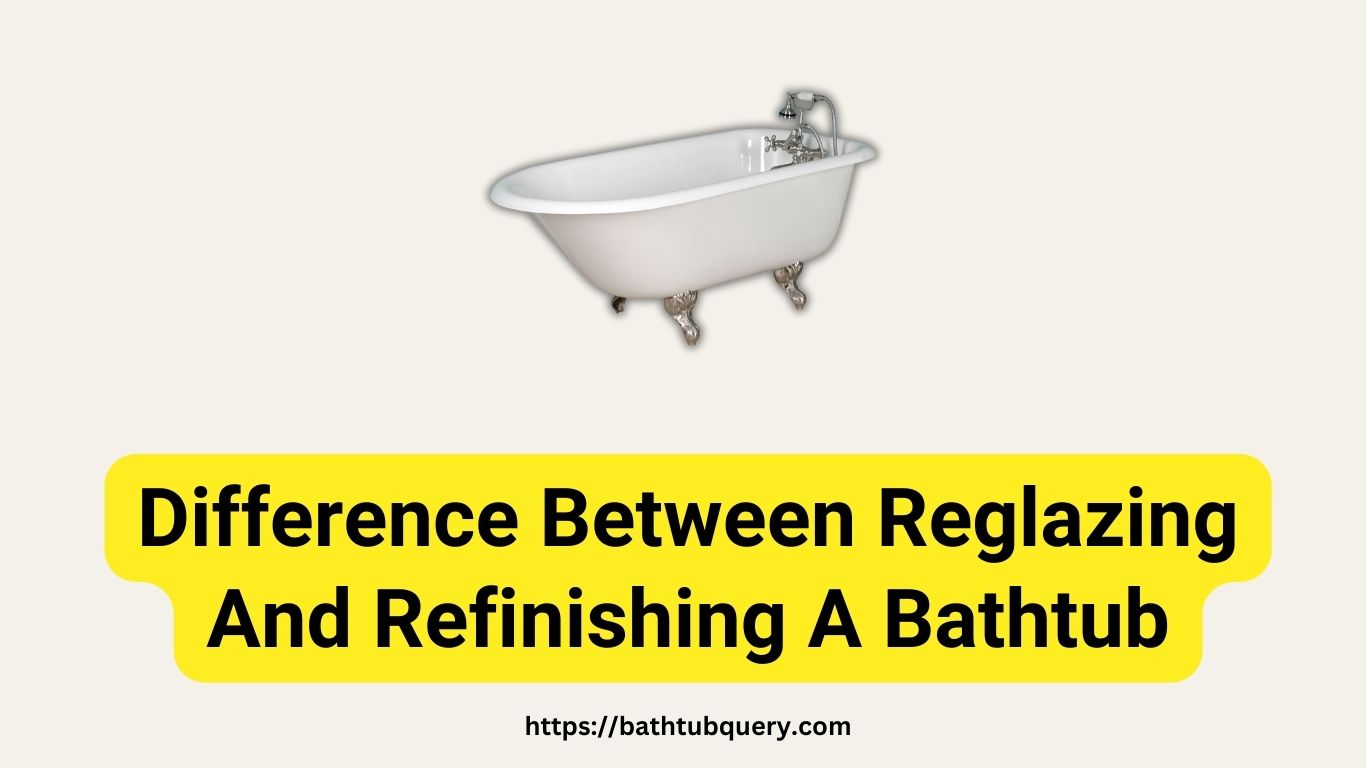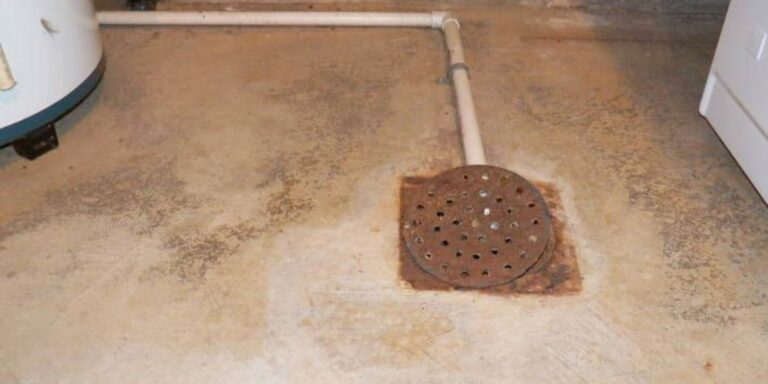Difference Between Reglazing And Refinishing A Bathtub
As with many things in our homes, bathtubs age and wear over time. We have two ways of restoring a bathtub’s beauty when it reaches its old age: reglazing and refinishing. Each process has its own characteristics, uses, and benefits. Let’s take a look at the differences to help you decide which is the right choice for you. I’ve discussed the Common Reglazed Tub Problems in other post.
Bathtub refinishing typically costs $335 to $628, with a national average of $481.
Difference Between Reglazing And Refinishing A Bathtub
| Feature | Reglazing | Refinishing |
|---|---|---|
| Thickness | Thin | Thick |
| Durability | Short-term (1-3 years) | Long-term (5-15 years) |
| Cost | Lower | Higher |
| Time Taken | Quicker | More Time |
What is Bathtub Reglazing?
In a bathtub reglazing, a new glaze coat is applied over the existing surface of the tub to refinish its appearance. In order to ensure a high-quality finish, the process usually involves specialized equipment and skilled technicians. This method makes an old or worn-out bathtub look brand new without replacing it.
Cleaning and Sanding
- Thorough Cleaning: During the first stage of reglazing, technicians use professional cleaning agents to remove old finish, dirt, soap scum, grime, and old coatings that could become adhesion inhibitors. Otherwise your tub can smell and for this i’ve wrote a separate post about How to Get Rid of Smell from Reglazing.
- Sanding: As soon as the tub is cleaned, it will need to be sanded down. Sanding removes any remnants of the old finish, creating a rough surface that allows the new glaze to adhere properly. This step is crucial for a smooth and long-lasting outcome.
Application of Glaze
- Selection of Glaze Material: The glaze material, often a specialized paint or epoxy formulated specifically for bathtubs, is chosen. It must be suitable for the tub’s material and designed to create a smooth, glossy, and durable finish.
- Priming: Some technicians may apply a primer to enhance the adhesion of the glaze.
- Application Technique: The glaze is typically applied using a spray gun or a roller, depending on the specific requirements of the job. This requires precision and expertise to ensure an even and flawless coating.
- Number of Coats: Usually, multiple coats are applied to achieve the desired thickness and finish. Each layer must be applied carefully and allowed to dry before the next is added.
Drying Time
- Curing Process: After the glaze is applied, it must cure to harden and adhere properly to the tub’s surface. This is a critical phase in the reglazing process.
- Time Frame: The curing time for the glaze typically ranges from 24 to 48 hours. It can vary depending on the specific product used and the environmental conditions.
- Handling: During this period, the tub must not be used or exposed to moisture, as it can interfere with the curing process. Following the manufacturer’s instructions and the technician’s guidelines is essential to achieve a successful result.
Benefits of Bathtub Reglazing

1. Preserving the Old, Embracing the New
Bathtub reglazing offers the opportunity to breathe new life into an old tub. By preserving what’s already there, we honor the past while embracing new vitality. The process involves cleaning, sanding, repairing, and applying a new finish. The result is a glossy, smooth surface that both looks and feels new.
2. Economical Revival
Replacing a bathtub can be a costly endeavor, involving not only the purchase of a new tub but also demolition, plumbing, and more. Reglazing provides a cost-effective solution, often saving up to 75% compared to replacement.
3. Environmental Stewardship
In a world where mindful consumption becomes a duty, reglazing stands as a choice for sustainability. Instead of adding to the landfill, the old tub is renewed, reflecting an ethic of conservation and respect for Mother Earth.
4. A Canvas of Choices
Reglazing offers a multitude of options in colors and finishes. It is a way to personalize your sacred space, choosing hues that resonate with your inner self.
5. Quick Transformation
While replacing a bathtub may take weeks, reglazing typically takes only a day or two. The quick turnaround time ensures that the essential flow of water in your home is not interrupted for long.
6. Longevity and Care
A reglazed bathtub, if maintained with care, can last 10-15 years. It’s a lasting commitment to the beauty and functionality of your home.
What is Bathtub Refinishing?
Refinishing involves a more complex process of resurfacing the tub by repairing any cracks or holes, followed by applying a new surface coating. Make sure if you’ve read this post about How Long Do Bathtub Refinishing last.
Process of Bathtub Reglazing
1. Repair and Prep: The first step in bathtub refinishing, the Repair and Prep stage, focuses on the meticulous preparation of the bathtub’s surface to receive a new coating. This step includes:
- Damage Repair: Any cracks, holes, or other forms of damage are carefully repaired. This may include filling in cracks with a specialized filler or using a patch to mend larger holes.
- Cleaning: The surface of the tub is thoroughly cleaned to remove any soap scum, mineral deposits, or other contaminants that might interfere with adhesion. This ensures a smooth surface for the subsequent coating.
- Sanding: The surface is then sanded using a specialized abrasive material to remove any old coatings and provide a suitable texture for the new coating to adhere to. The goal is to achieve a smooth and uniform surface, free from imperfections.
2. Coating: The Coating phase is a crucial part of the bathtub refinishing process where the new surface is applied. This stage consists of:
- Primer Application: A specialized primer is applied to the tub’s surface to enhance the bond between the old surface and the new coating.
- Coating Material Selection: A specialized coating material designed for bathtub refinishing is chosen, taking into consideration factors like durability, appearance, and resistance to moisture.
- Application of Multiple Layers: The coating material is applied in multiple layers, with careful attention to achieving a uniform thickness. This ensures a durable, new finish that looks and feels like a brand-new tub.
- Finishing Touches: The surface may be polished or buffed to achieve the desired finish, ensuring that the final appearance meets the homeowner’s expectations.
3. Curing Time: The Curing Time phase is the final stage in the refinishing process and is essential for achieving a long-lasting result. Key points in this stage include:
- Time Required for Curing: The newly applied coating needs time to cure, typically 48 to 72 hours. This is crucial to allow the materials to harden and bond securely to the surface.
- Care During Curing: It is vital to avoid using the bathtub or subjecting it to any stress during this period. Any premature use or application of pressure may cause the new surface to crack, peel, or become otherwise damaged.
- Final Inspection: After the curing process, a final inspection is carried out to ensure that the surface is perfectly finished, without any flaws or imperfections, and ready for regular use.
Benefits of Bathtub Reglazing
1. A Return to Beauty
Just as the river smooths the jagged stone, bathtub refinishing polishes and restores the surface of the tub, returning it to its original shine. Cracks, chips, and stains are addressed with great care, leaving the surface smooth and inviting.
2. Economic Wisdom
The cost of replacing an entire bathtub can be as towering as the mountains. Refinishing, on the other hand, is like finding a path through the hills—it’s a cost-effective alternative that can save homeowners up to 75% compared to replacement.
3. Environmental Stewardship
Mother Earth bestows upon us many gifts, including the materials that make our homes. By refinishing a bathtub instead of replacing it, we honor her by reducing waste and conserving the resources that might otherwise be used in manufacturing and transportation.
4. A Swift Journey
While a full replacement may take as long as the migration of geese, refinishing is often completed within a day or two. This swift journey minimizes disruption and allows families to quickly return to the daily rituals that unite them.
5. Customization Like the Artist’s Brush
Refinishing allows homeowners to dance with creativity, choosing colors and finishes that reflect their own tastes and the unique spirit of the home.
6. Strength Like the Mighty Oak
With the proper care and expert touch, a refinished bathtub can stand strong for many seasons, often extending the life of the tub by 10 to 15 years.
Conclusion
Refinishing is a more comprehensive and customized way to restore your bathtub, but reglazing is a fast and effective way to refresh its appearance. The choice depends on the condition of your bathtub, your budget, and your personal taste.
It is always a good idea to consult with an expert who can assess your particular situation and offer guidance based on experience and expertise when considering reglazing or refinishing your tub.
You can recreate the rejuvenating experience of nature’s most nurturing landscapes in your own home’s bathroom with the help of this guide.
FAQs
What is more expensive, reglazing or refinishing?
Refinishing is typically more expensive as it involves more extensive work.
Can I do reglazing or refinishing myself?
DIY kits are available but hiring a professional ensures quality results.
How long does reglazing last compared to refinishing?
Reglazing lasts 1-3 years, while refinishing can last 5-15 years.
Is there a noticeable difference in appearance?
Both methods can look great, but refinishing often offers a more durable and customized finish.
What’s the best option for a damaged bathtub?
Refinishing is generally the better option for bathtubs with structural damage as it involves repairs.

Amanda has been designing and installing bathtubs for over 15 years. She first got interested in the bathtub industry while working as an interior designer right after college. During her years as a designer, Amanda was frustrated by the lack of high-quality, unique bathtub options for her clients. This passion led her to start her own bathtub website in 2009.







